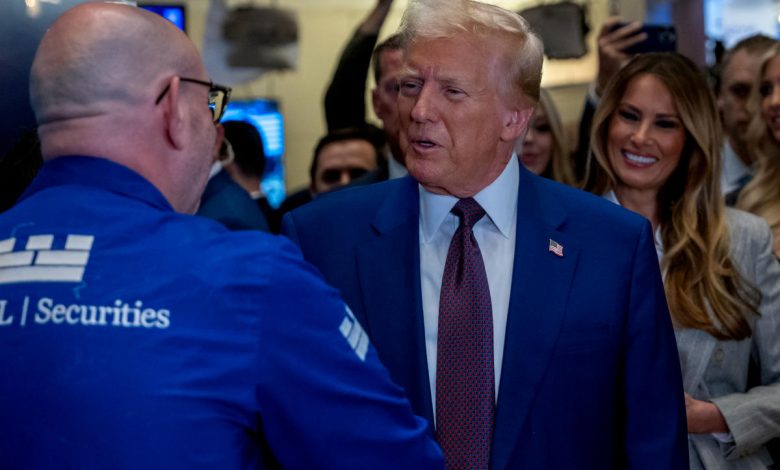Dow, S&P 500, Nasdaq pare losses after US delays tariffs against Mexico

US stocks lost ground Monday in reaction to President Donald Trump’s announcement of tariffs on China, Mexico, and Canada. But the major averages pared heavy losses mid-morning after President Trump said he would delay tariffs against Mexico by a month.
The tech-heavy Nasdaq Composite (^IXIC) pared losses in half to drop around 1%, while the S&P 500 (^GSPC) fell 0.6%. The Dow Jones Industrial Average (^DJI) was down 0.2%.
Consumer discretionary (XLY) stocks, which includes automakers, were the hardest hit early in the day. Tech (XLK) also dragged on markets as shares of AI chip giant Nvidia (NVDA) and iPhone maker Apple (AAPL) dropped.
The tariffs, set to take effect on Tuesday, will include 25% duties on Canada and Mexico, and 10% on China. Energy imports from Canada will carry a lower 10% duty.
On Monday morning President Trump said he spoke with Mexican President Claudia Sheinbaum and she agreed to send 10,000 soldiers to the border to stop the flow of fentanyl, and illegal migrants into the US.
“We further agreed to immediately pause the anticipated tariffs for a one month period during which we will have negotiations headed by Secretary of State Marco Rubio, Secretary of Treasury Scott Bessent, and Secretary of Commerce Howard Lutnick, and high-level Representatives of Mexico,” said Trump.
The US dollar index (DX-Y.NYB, DX=F) rose to trade near its highest levels in two years. Meanwhile, West Texas Intermediate crude futures (CL=F) jumped well over 2%, outpacing the 1.6% rise for the international benchmark Brent (BZ=F).
With Trump’s tariffs arriving as expected over the past week, focus has been honed in on retaliatory announcements. As Yahoo Finance’s Ben Werschkul reported, Canada and Mexico were quick to announce measures across a range of US goods. Prime Minister Justin Trudeau said Canada will place 25% counter-tariffs on around $107 billion in American-made products.
The tit-for-tat moves come amid considerable uncertainty about President Trump’s trade agenda for 2025. That uncertainty is a large part of the Fed’s desire to hold interest rates steady,over fears of a rise in inflation.
The tariffs promise to impact consumers directly across a number of industries. Automobiles and auto parts, gas and oil, clothes, computers, whiskey, and avocados are among the items expected to see prices rise.
LIVE 15 updates






